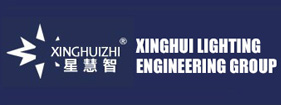The current status and development trend of the global solar street lamp market

The global solar street light market is expected to grow by 19% from 2016 to 2020. The global solar streetlight market is divided into fluorescent lamps and LED lamps.
The rapid growth of the solar street light market is to meet the growing demand, reduce the power consumption of solar street lights, and ensure the safety of residents and walkers.
In 2015, the Asia Pacific market share was 46%; Europe, the Middle East and Africa accounted for 30%; the United States was 23%.
Asia Pacific: The Chinese government and the Indian government have taken measures to stimulate growth.
The Asia Pacific region has a large market share, and India and China will promote energy-efficient lighting. In addition, there are many LED chips and assembly plants in China, Japan, Korea and Taiwan. The Indian government is committed to the development of smart cities with the goal of creating more than 100 smart cities by 2030. Unlike traditional street lights, solar LED lights are extremely cost-effective because they do not need to be connected to the national grid. They are ideal for use in sunny countries and are ideal for off-grid use. Solar street lights can work normally in remote areas even at night, which will improve the living standards of residents. This factor will encourage the installation of solar LED street lights in 1,000 villages. Many villages have installed solar LED street lights in India, China and Africa.
Europe, Middle East and Africa: The potential market for solar streetlights in Africa is growing tremendously. Europe is the second largest contributor to the global solar streetlight market in 2015. The market is driven primarily by government-developed energy efficiency and renewable energy targets, which have driven the installation of solar street lights in Europe. Solar street lights account for 40% of the UK's energy consumption. Therefore, the government combines solar energy and LED lights to help carbon dioxide emissions and save energy costs.
There is plenty of sunshine in southern Europe and the Middle East, and off-grid systems can be used. The Egyptian government is installing solar street lights to reduce grid load. Many parts of Africa still rely on traditional lighting. Some cities in the region have installed solar streetlight systems, which have since improved the socio-economic status of villagers and citizens.
United States: Brazil and the United States have a large demand for solar street lights. The US government is vigorously promoting the energy-saving industry. The cost of LEDs and solar panels has been reduced and performance has improved, which has driven the installation of solar street lights in the United States. New York-based EnGoPlanet works with Las Vegas to install solar street lights, transforming traditional energy sources and developing sustainable and renewable energy. Although the United States dominates the solar streetlight market in North America, Brazil dominates the solar street lighting market in South America. Brazil has invested heavily in LED street lights since 2013. The Brazilian R20Hub is a large-scale LED streetlight project with the goal of covering 1.5 million solar street lights in 13 cities across Brazil to alleviate the pressure on the national grid.





